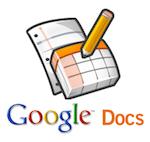 In my Pathophysiology course the students are required to master a long list of objectives. In order to help them focus their attention and create a collective study guide, I create a GoogleDoc for the class which includes directions, objectives for each unit, assignment objectives to students, and a framework within the document to help in creating a place to post their contribution. I organize the start-up but students own the content and the process after my initial set-up. The GoogleDoc is a study guide for the students, created, enhanced, and modified by the students.
In my Pathophysiology course the students are required to master a long list of objectives. In order to help them focus their attention and create a collective study guide, I create a GoogleDoc for the class which includes directions, objectives for each unit, assignment objectives to students, and a framework within the document to help in creating a place to post their contribution. I organize the start-up but students own the content and the process after my initial set-up. The GoogleDoc is a study guide for the students, created, enhanced, and modified by the students. Each student is assigned to 2-3 objectives per unit. After each lecture that covers the objective, the student assigned to the objective posts a summary and notes to the GoogleDoc in the section created for those objectives. The students from that week are also asked to review the posts from the students of the previous week to ensure accuracy and completeness. This structure helps students focus on particular items in lecture while not feeling overwhelmed, but also creates a sense of collective ownership for the material. The collective nature of this resource gets buy-in from all students, especially after the students are able to use the study guide for exam preparation!
I find this study guide to be a great tool to assist the students in collectively learning and enhancing materials presented in lecture. While I don't edit the GoogleDoc, I do look at it and am often pleasantly surprised at the details and additional information that students add to the study guide, often information gathered on their own (their own words, more examples and pictures from the web, additional research articles about a topic, etc.) Students really do more than regurgitate the lecture in the study guide and report the resource to be very valuable to their learning.
My recommendation to anyone interested in creating a similar study guide structure in GoogleDocs is to arrange it so the students own it and you are hands-off, write very clear directions for completing their assigned section, give information and a demonstration about how to post in GoogleDocs, and create a framework or outline to the GoogleDoc to help students in structuring a useful guide. Prior to
 using GoogleDocs I used a PBwiki to create this study guide; I prefer GoogleDocs for accessibility and security. If you would like to see an example of a start-up or completed guide, please contact me.
using GoogleDocs I used a PBwiki to create this study guide; I prefer GoogleDocs for accessibility and security. If you would like to see an example of a start-up or completed guide, please contact me.For more information about GoogleDocs visit: http://learn.googleapps.com/docs
Submitted by Melissa Weege, Radiation Therapy



